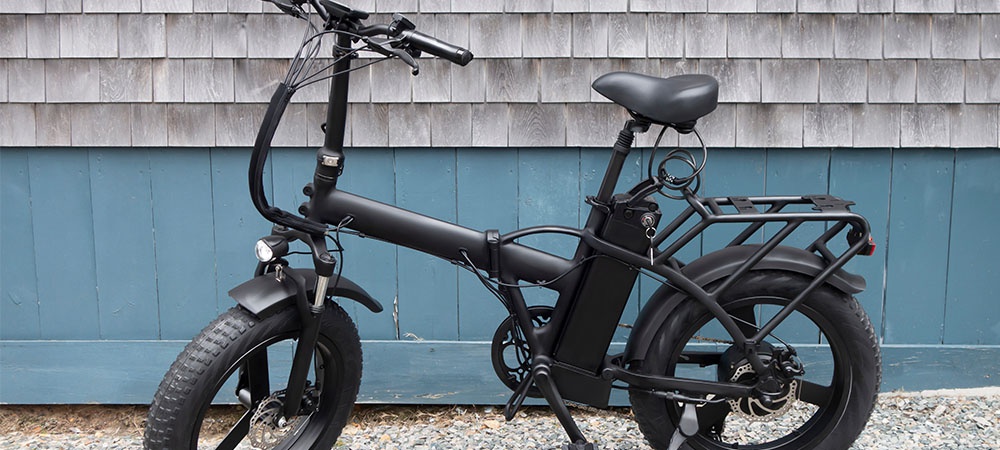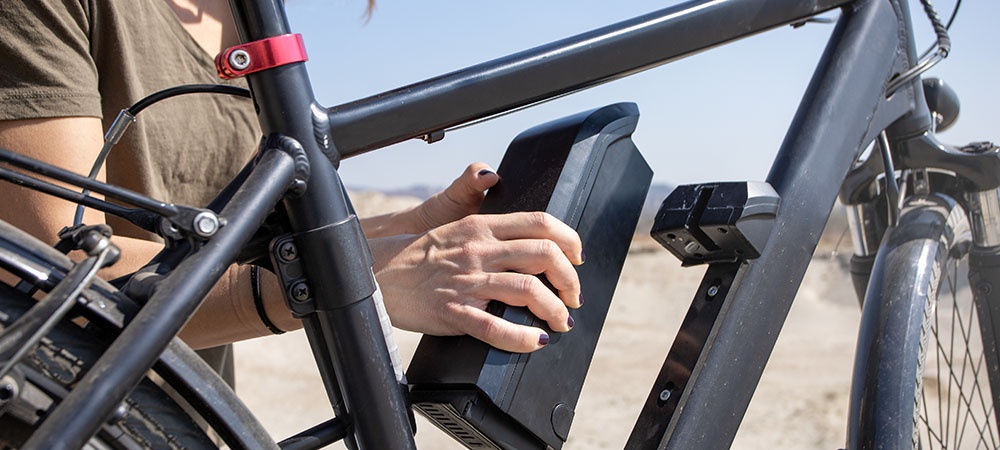Before buying an e-bike, there are many different aspects to consider. An e-bike will fall into a specific category of bike, will have a certain type of motor, and will have its own classification. Added to this are many other features of a bike that may be different from one model to the next.
If you’re new to e-bikes and wondering what an ebike is, all of this can be pretty confusing. Thankfully we’re here to help. We’ll break down each type of ebike so you know which one is right for you. Let’s get started!
Bike Categories
There are several categories that e-bikes can fall into. The right one will depend on how you intend to use the bike. Let’s look at the basic types of e-bikes you can get.
Cruiser E-Bikes
Don’t want an e-bike for any specific reason but want to have fun? If so, a cruiser e-bike is the one for you. Cruiser e-bikes typically have a range of 20-40 miles. Although this can vary depending on the size of the battery and how much power the motor uses.
Cruiser e-bikes are designed for leisurely riding and often come equipped with comfortable seats, baskets, and lights.
Commuter E-Bikes
Commuter e-bikes have been designed specifically for commuting. This typically means it has a frame crafted from lightweight materials, such as aluminum or carbon fibre. It also usually has a suspension system to absorb bumps and shocks, and tires designed for pavement riding.
While there is no definitive answer to what defines a commuter e-bike, these are some of the most common features.
Off-road E-Bikes
An off-road e-bike provides a more versatile riding experience than a traditional road bike. Off-road e-bikes often have wider tires and suspension systems, allowing them to handle rough terrain better.
These hill climbing electric bikes also have features like integrated lights and cargo racks that make them more suitable for commuting or adventure riding. If you’re planning on tackling some serious trails, then an off-road e-bike is likely the best option.
Road E-Bikes
Road e-bikes are generally smaller and lighter than other types of e-bikes, making them easier to maneuver on city streets and paved roads. They also tend to have better range and battery life, making them ideal for commuting.
Cargo E-Bikes
Cargo e-bikes are designed to carry heavy loads. Therefore, they typically have larger frames and wheels than standard e-bikes and often come equipped with attached trailers or racks. This makes them ideal for carrying groceries, laundry, or even small furniture.
In addition, cargo e-bikes are often outfitted with features that make them more comfortable to ride, such as suspension systems and extra padding.
Hybrid E-Bikes
Hybrid e-bikes typically are a mixture of two or more of the above types. This usually means they work well on paved roads but can also be ridden off-road. For riders who want the flexibility to ride, either way, a hybrid ebike is an ideal choice.
Folding E-Bikes
These bikes typically have smaller wheels than traditional bicycles and may also have smaller batteries and motors.
These e-bikes are often more compact and lightweight than other e-bikes, making them ideal for travellers or city dwellers who need to save space.
Whether you’re looking for an easy way to get around town or need a bike you can take on the road, a folding e-bike may be the perfect option.
Types of Electric Bike Motor Assist
There are three classifications for e-bikes which makes it easier for lawmakers to regulate them. However, there are significant differences between them so let’s check out what they are.
Class 1 E-Bike
A Class 1 e-bike is a bicycle equipped with an electric motor that assists when pedalling. A throttle activates the motor, providing up to 20 miles per hour of assisted speed.
Class 1 e-bikes are designed for use on paved surfaces and are typically used for commuting or recreational riding. In some jurisdictions, Class 1 e-bikes are treated as bicycles, while in others, they are classified as mopeds or motorcycles.
Class 2 E-Bike
A class 2 e-bike is an electric bicycle equipped with a motor that can provide power, even when the rider isn’t pedalling. As with class 1, the bike is capped at 20 mph.
Class 2 e-bikes are relatively new on the market and are becoming increasingly popular due to their versatility. Unlike class 1 e-bikes, which are pedal-assist only, class 2 e-bikes can be operated in both throttle and pedal-assist mode.
This makes them ideal for riders who want the option of riding their ebike without any pedalling, Using the motor for a boost when necessary, or who want to ride without assistance.
Class 3 E-Bike
A class 3 e-bike is a powerful pedal assist bike. Class 3 e-bikes are limited to 28 mph, the maximum speed the motor can assist with. These bikes are often used for commuting or leisure riding, as the pedal assist can make it easier to ride up hills or cover long distances.
For riders who want more power and speed, this is the e-bike for you. They have higher top speeds and more powerful motors. However, these bikes are not legal in all states or countries, so riders should check local laws before purchasing.
Motor Power
There are a few key things to consider when it comes to the motor power of an e-bike. The first is the amount of torque that the motor can generate. This is important because it will determine how quickly the bike can accelerate.
The second factor to consider is the motor’s power rating, typically expressed in watts. This number will give you an idea of how much work the motor can do over a period of time.
As you can expect, a more powerful ebike will generally be more expensive. As most e-bikes are speed-limited, many view other specifications, such as range, as much more important.
Motor Location
There are three spots where you can have an e-bike motor. It can be on either of the wheels or the central crank between the pedals. On-the-wheel motors are called hub motors, while crank motors are called mid-drive. Let’s look at the difference between them.
Hub Motor
A hub motor is an electric motor contained within the wheels of an electric bicycle. The motor gets its power from a battery and is used to drive the bike when the rider pedals.
Hub motors are becoming increasingly popular in the e-bike market because they offer several advantages over other motors.
They are relatively lightweight and compact, making them ideal for use on bicycles. Additionally, they are very efficient and provide good torque, making them well-suited for use on hilly terrain. Hub motors also have the advantage of being virtually silent, which can be a major selling point for some riders.
Mid-drive Motor
Mid-drive motors are the centrepiece of many e-bikes, including some of the most popular models on the market. Unlike hub motors, which are mounted on the wheels, mid-drive motors are located near the pedals, in the middle of the bike.
This has several advantages, such as allowing for more natural weight distribution. This results in a bike that handles more like a traditional bicycle.
Finally, mid-drive motors tend to be more efficient than hub motors, making them ideal for longer rides. So whether you’re looking for a leisurely ride around town or an all-out assault on a mountain trail, an e-bike with a mid-drive motor is sure to give you the boost you need.
Bike Battery Type
When choosing a battery for your e-bike, there are a few things to keep in mind. The first is the type of battery you need. There are two main types of batteries used in e-bikes: lead-acid and lithium-ion.
Lead-acid batteries are cheaper and heavier and don’t last as long as lithium-ion batteries. Lithium-ion batteries are more expensive, but they’re lighter and last longer.
The second thing to consider is the capacity of the battery. This is measured in watt-hours (Wh), determining how far you can ride on a single charge. The higher the capacity, the further you can go.
Lead-acid batteries are dying out. While they are cheaper, their performance simply cannot compare to that of a lithium-ion battery. If you have a choice between the two, choose the latter.
Other Differences
When deciding on an e-bike, it’s essential to consider more than just the basic features. Other important factors to consider include range, security, frames, smart displays, smartphone integration, racks, lighting, and accessories.
For example, security is an important consideration as e-bikes are often targets for thieves. Look for models with integrated locking systems that make it more difficult for thieves to steal your bike.
Consider the features that are most important to you in an e-bike. If you value smartphone integration or a sleek display, look for models that offer those features. With so many options on the market, it’s important to do your research before making a purchase.























